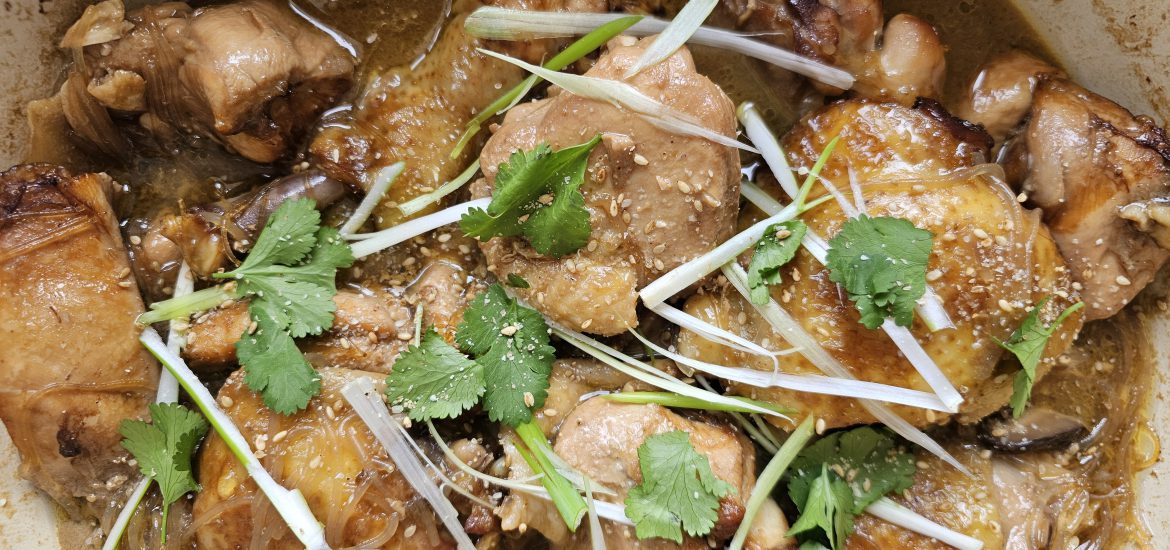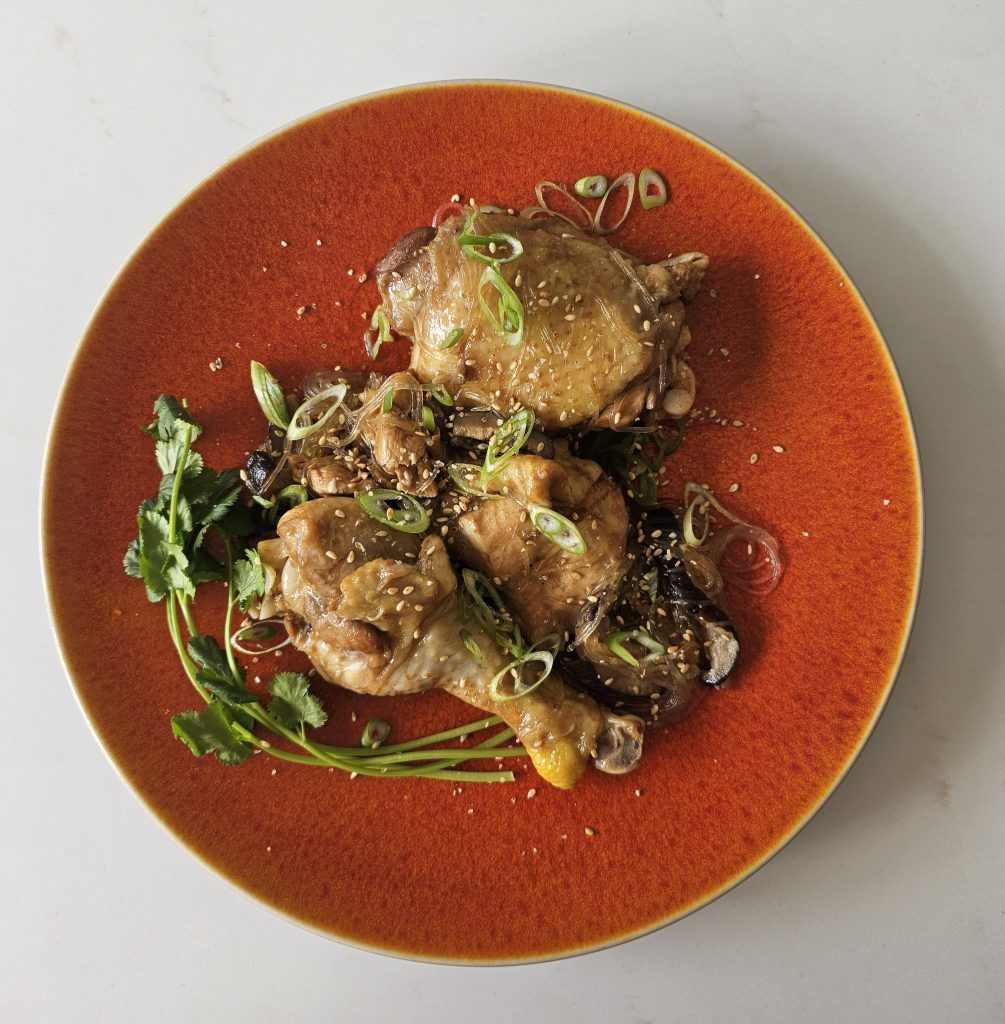
I am back in my London kitchen, and getting into the swing of things. Within 12 hours of landing at Heathrow Airport I was in Waitrose buying groceries.
The weather is still very cold. I thought the tulips, planted as bulbs last October, would have flowered and faded by now but they are only just appearing.

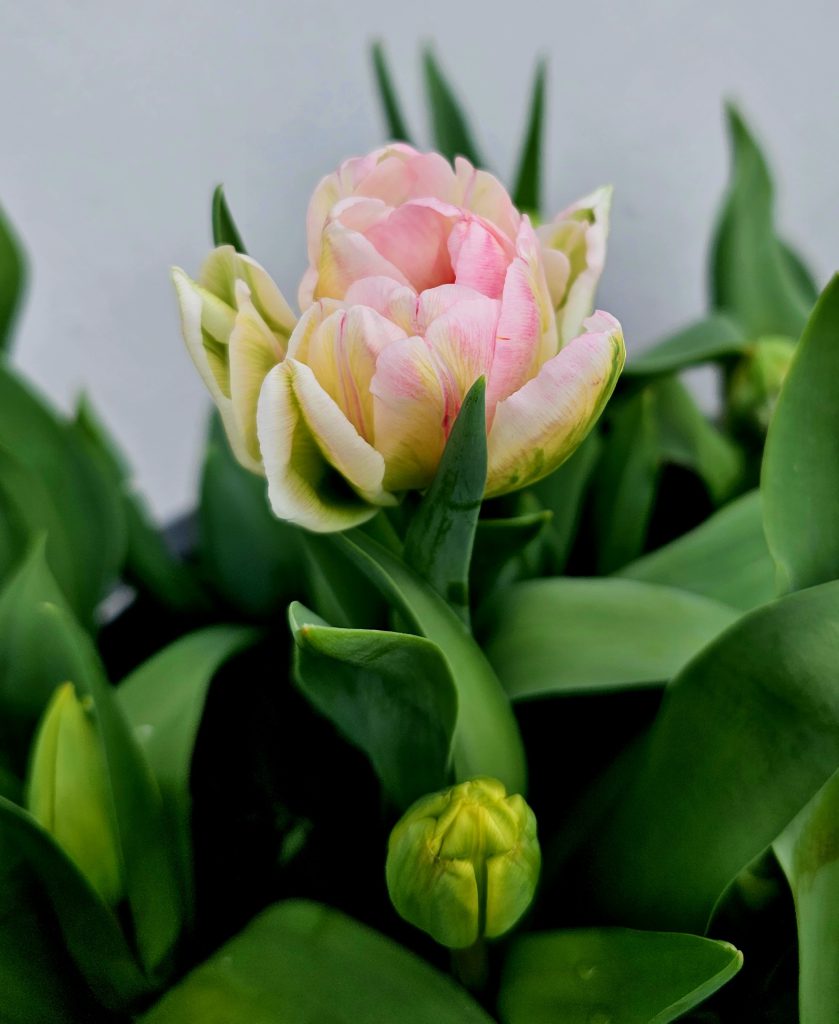
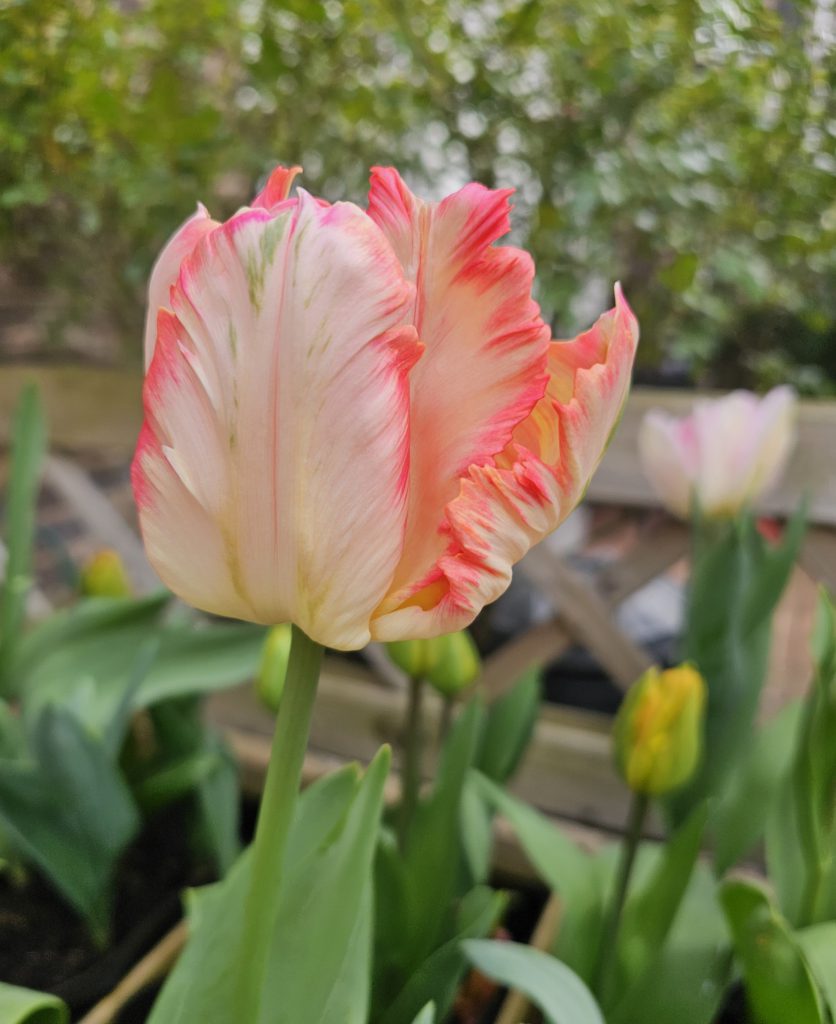
Cold weather calls for warming foods. Last night we ate some spaghetti with a 50-50 beef/pork mince and tomato sauce, and today I decided to cook chicken with ginger and oyster sauce. This is a dish my mother cooked often when I was growing up. Since I left for England 40 years ago, this means I have eaten my own version more than I have eaten my mother’s version.
Still, I remember the fundamentals as I always helped in the kitchen. If you were to ask my mother now how to cook this dish, she would not know. She has not needed to venture into the kitchen in the past few years.
One of the reasons I started this blog 10 years ago was to record the recipes of what I cook on a day to day basis. I have a folder of hastily scrawled notes from when I have managed to pin my mother down for her recipes, but none are complete.
This recipe calls for a whole chicken to be cut into pieces. On Sunday mornings I used to accompany my maternal grandmother (popo) to the wet market in Petaling Jaya Old Town, where live chickens were sold. This was back in the 1970s: you would pick your hen, and the vendor would kill then plunge the entire bird into a drum of boiling water in order to loosen the feathers for plucking.
No more wet markets and live chickens

I don’t have any aversion to jointing a whole chicken. In fact I prepared two chickens because it is better to cook more, for all the effort. What I have an aversion to is dried Chinese mushrooms. Not one to chew at pencil ends as a schoolkid, or on chewing gum as a teenager, I simply do not see the point of these rubbery mushrooms. However, I added a few to the dish for old times’ sake.
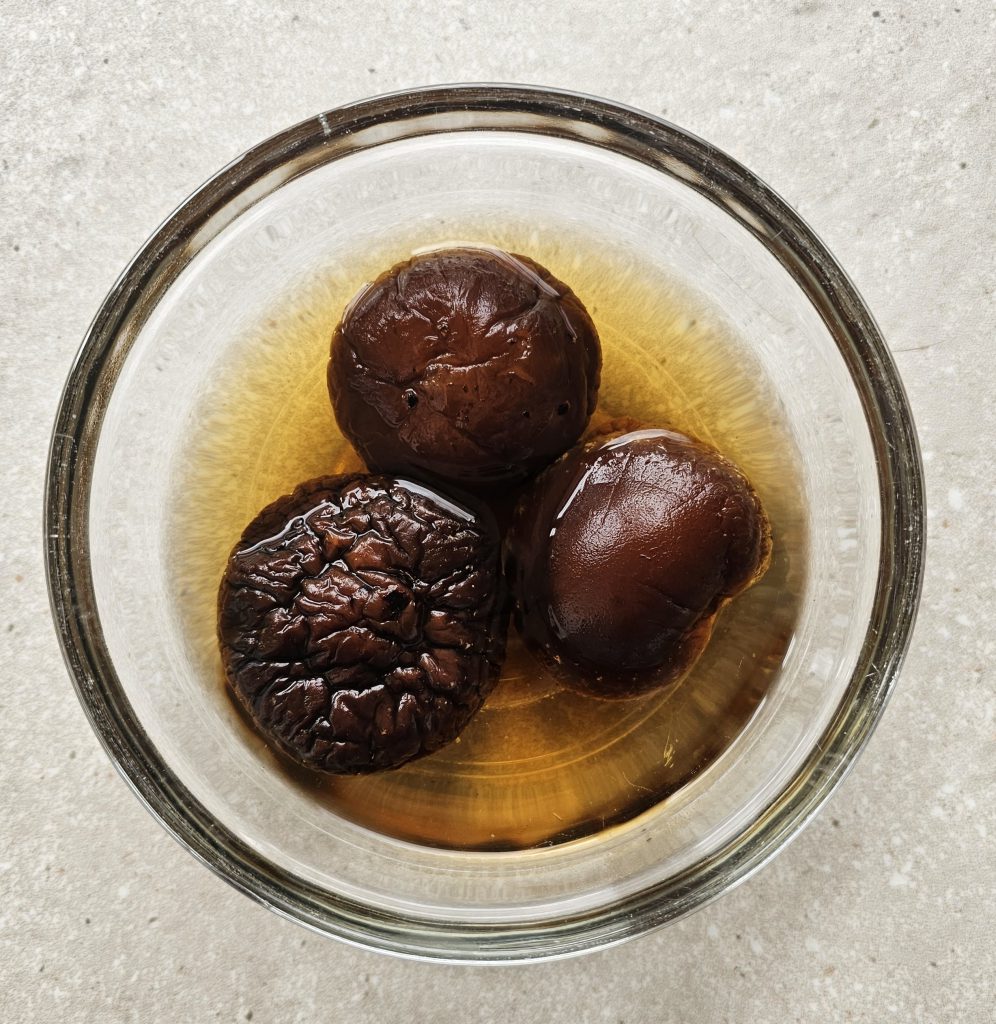
Sometimes my mother added mung bean noodles, also called cellophane or glass noodles. Hold your enthusiasm here. If you are too generous, the noodles will soak up all the gravy and while they will taste super delicious, this will be at the cost having a dry chicken dish. Confession: since I helped in the kitchen I always managed to reach the gravy-soaked noodles first, which made for such a great combination with freshly steamed rice.
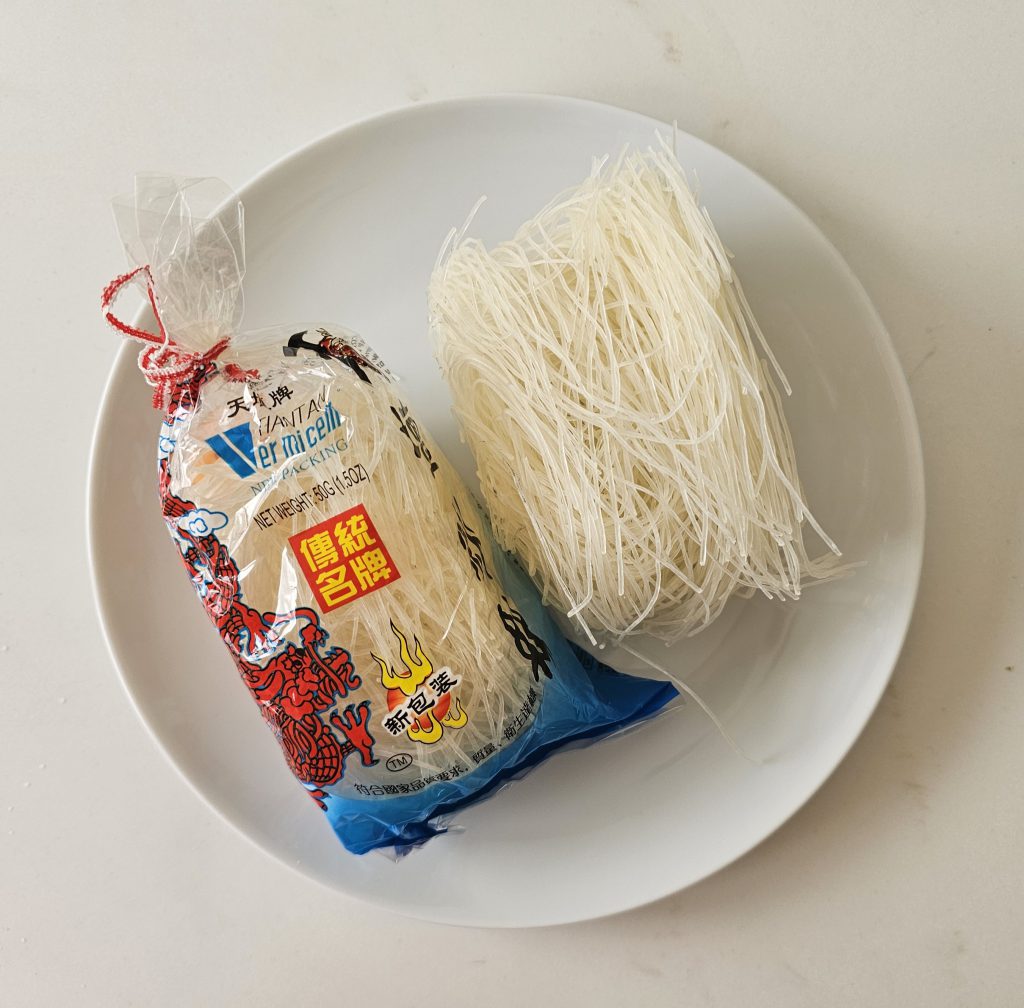
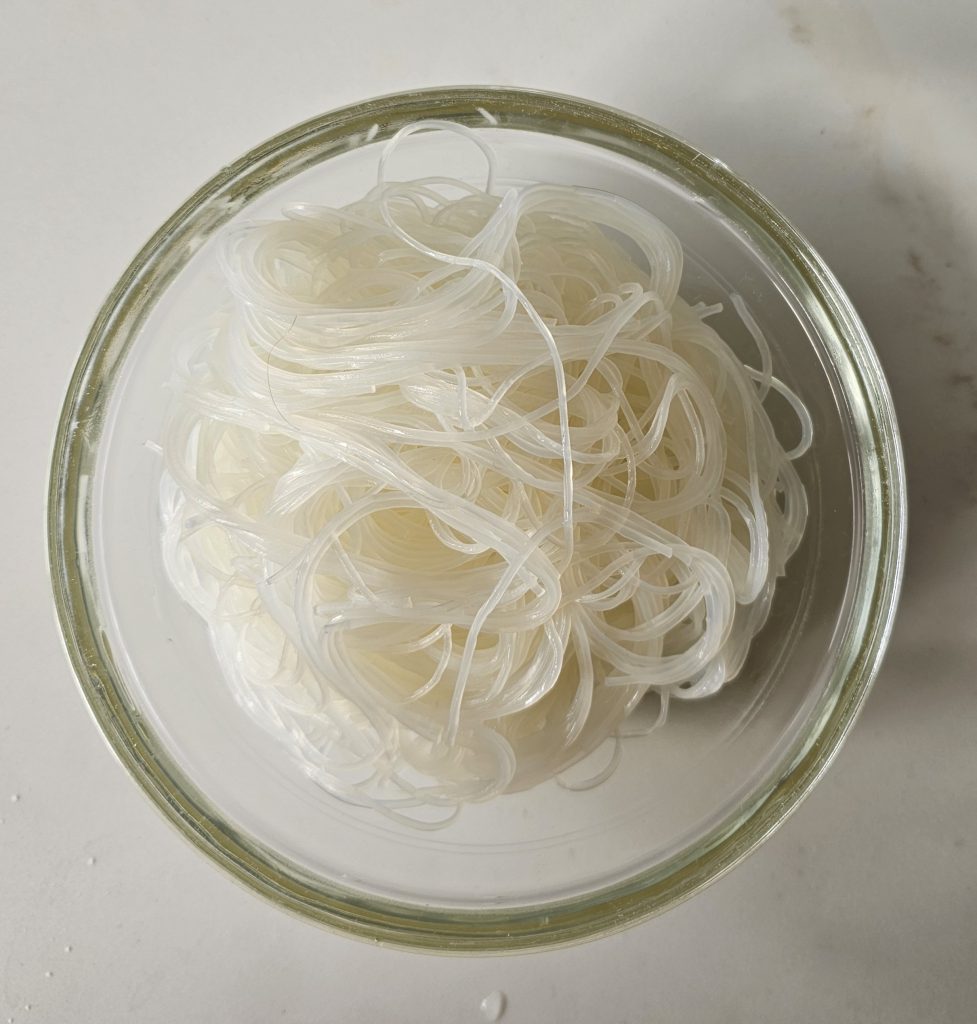
The recipe below will feed 8 – 10 persons, along with some rice and a vegetable dish. Perhaps add an egg omelette too (recipe at the end of the post). I have listed the brands of the sauces I used, so if you use a different brand, make sure to adjust the seasoning as you go along. When I finished cooking and had a taste of the gravy, it transported me right back to our kitchen in Kuala Lumpur.
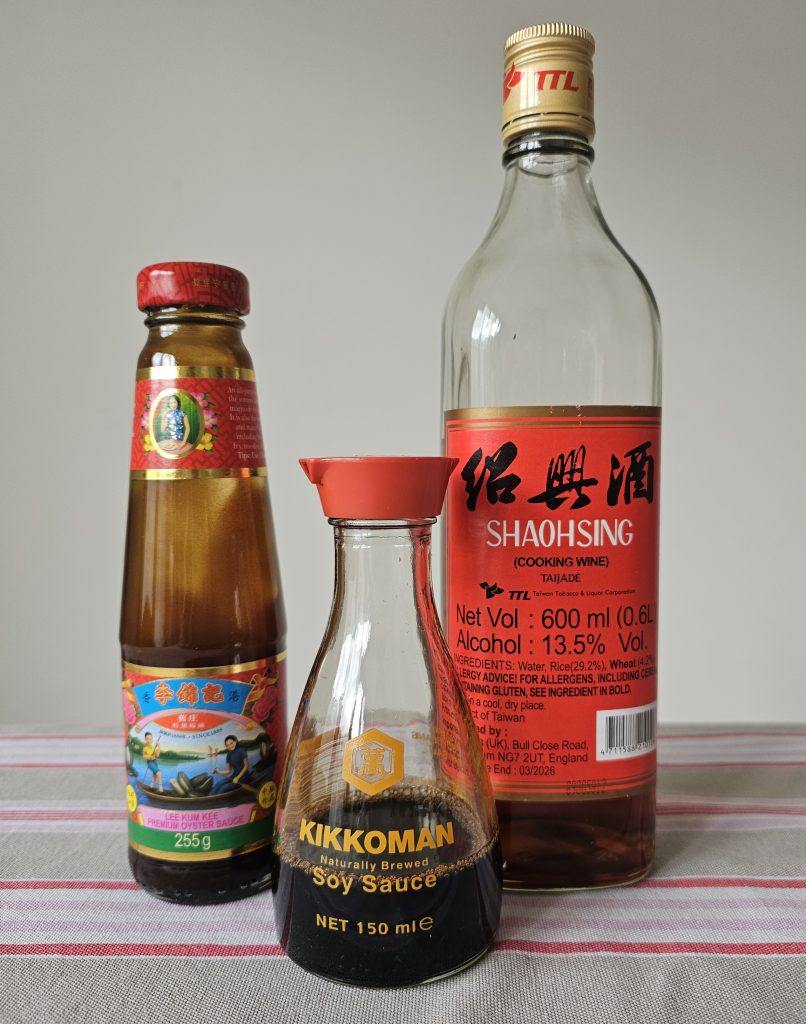
For the Chicken:
2 kg chicken pieces cut from 2 whole chickens, saving the wings and carcass to make a stock
5 cm piece of fresh ginger, peeled and sliced thinly
4 large cloves of garlic, peeled and sliced thinly
a few dried shiitake mushrooms, soaked in warm water
50 – 100 g mung bean noodles (Tiantan brand), soaked in warm water
2 tablespoons sunflower oil
1 teaspoon toasted sesame oil (Kadoya)
For the Marinade:
2 tablespoons light soya sauce (Kikkoman)
2 tablespoons premium oyster sauce (Lee Kum Kee)
2 tablespoons Shaohsing rice wine (Taijade)
1 tablespoon corn starch
2 teaspoons dark soya sauce (Pearl River Bridge)
2 teaspoons toasted sesame oil (Kadoya)
½ teaspoon golden caster sugar
10 twists of ground white pepper
You will also need a very large wok with a cover (my mother’s style), or a large Le Creuset/Staub cast iron pot (very heavy, but this is what I use).
How to Make:
Place all the marinade ingredients in a large mixing bowl and give it a stir.
Add the chicken pieces and toss until they are covered in the marinade. Set aside for 30 minutes.
When you are ready to cook, heat the oils in a large wok or pot. Tip in the sliced ginger, fry a little, then add the garlic. When the garlic and ginger have taken on a bit of colour, add the chicken pieces and mushrooms (sliced or halved). Give everything a good stir.
Dry fry the chicken for a few minutes, then add 300 ml water and the mushroom soaking water. Bring everything to a boil, then reduce the heat to a simmer. Place the lid on the wok or pot and leave to cook gently for 25 minutes. After this time, check if the chicken has cooked through and add a bit more water if the dish is looking a bit dry.
Drain the soaked mung bean noodles and add to the chicken. Cook for 5 minutes then switch off the heat.
This dish can be reheated successfully, which makes it convenient for when your family members arrive back late from school/ work, or for a lunch box the next day.
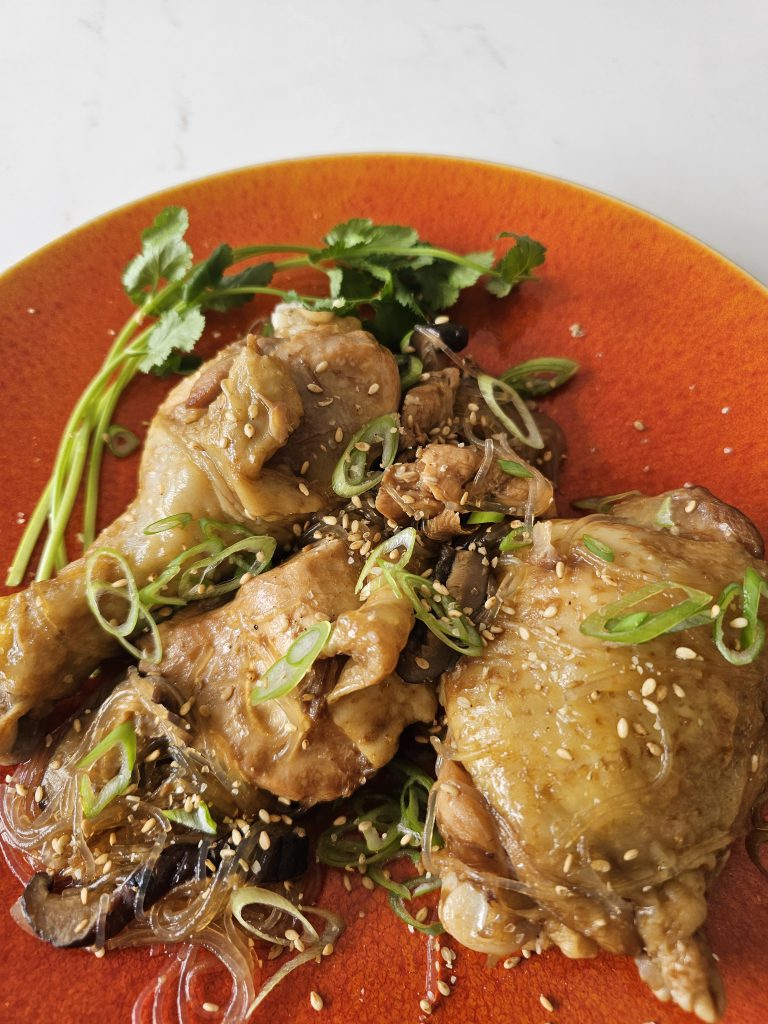
Egg and Chive Omelette, taken from the original post.
This recipe is from my mother who learnt it from my grandmother. She says that on no account should anyone make a flat egg omelette with chives, as a fluffy omelette is much superior in looks and taste.
Beat two eggs and add some salt, ground pepper, a touch of sesame oil and 3 tablespoons of chopped chives. Heat some oil in a small pan and pour in the egg. Using a pair of wooden chopsticks, agitate the egg around the pan until it forms a fluffy omelette. Do not overcook. Serve the egg in a soft brioche bun for breakfast, a light lunch or a snack at anytime. Double or triple the quantity if you are making this as a side dish for a larger communal meal.
